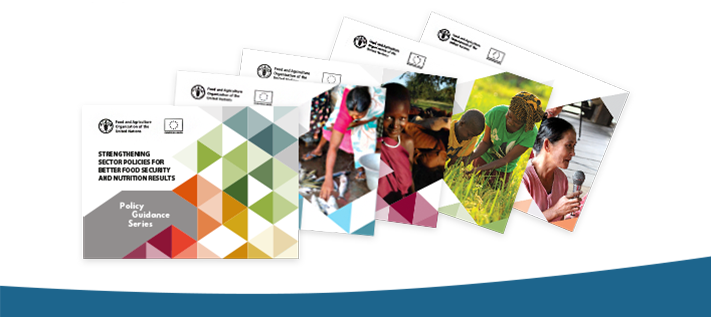 The livestock sector is a complex one that touches not only on animal production and agriculture but on environment, health, and land-use rights. Addressing all of these topics within a policy is a delicate task especially where there is a wide range of competing objectives: economic growth, employment, equality, food and nutrition security, environmental conservation and climate change adaptation.
The livestock sector is a complex one that touches not only on animal production and agriculture but on environment, health, and land-use rights. Addressing all of these topics within a policy is a delicate task especially where there is a wide range of competing objectives: economic growth, employment, equality, food and nutrition security, environmental conservation and climate change adaptation.
These policy guidance notes have been produced in the frame of the strategic partnership between the Food and Agriculture Organization of the United Nations (FAO) and the Directorate for International Cooperation and Development of the European Commission to boost food and nutrition security, sustainable agriculture and resilience.
The livestock policy guidance note was developed by a multi-disciplinary team of the Food and Agriculture Organization (FAO) under the direction of Berhe Tekola, Director of FAO’s Animal Production and Health Division. Overall guidance was provided by Henning Steinfeld, Chief of the Livestock Information, Sector Analysis and Policy Unit. The note was prepared by Joachim Otte (Team Leader) with contributions from Alejandro Acosta (Livestock Policy Officer), Mark McGuire (Senior Programme Coordinator, Strategic Programme 1 Team) and Esther Wiegers (Food Security and Nutrition Consultant).
In the context of responding to increased demand for edible animal products through mainly industrialized growth, policies should better protect smallholders’ needs and livelihoods. Policies can also help address the scrutiny this sector has faced for its effects on the environment, human health impacts from excessive consumption, heightened risk of zoonotic and food-borne diseases, animal welfare and food fraud scandals.
This livestock guidance note walks experts and non-experts alike through a series of important questions to ask and steps to take when incorporating food security and nutrition concerns into livestock policies.
Picture credit: FAO

